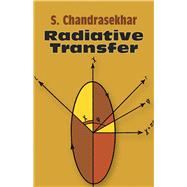
Note: Supplemental materials are not guaranteed with Rental or Used book purchases.
Purchase Benefits
What is included with this book?
Subrahmanyan Chandrasekhar: A Shining Star
The great Indian astrophysicist Subrahmanyan Chandrasekhar (1910–1995), recipient of the Nobel Prize in Physics in 1983 for his work on the later evolutionary stages of massive stars, was not only the author of several books reprinted by Dover over many years, but a frequent and highly valued reviewer of titles in his field during the 1970s and 1980s. Chandrasekhar's books, published by Dover, are: An Introduction to the Theory of Stellar Structure, 1967; Hydrodynamic and Hydromagnetic Stability, 1981; Principles of Stellar Dynamics, 2005; Ellipsoidal Figures of Equilibrium, 1987; and Radiative Transfer, 1960.
For those concerned with the distant future ― the really distant future ― Chandrasekhar's name will always be associated with the Chandrasekhar Limit, the figure of 1.44 solar masses, the minimal mass above which a dying star will collapse into a black hole following a supernova. People on Earth need not be bothered anticipating such drama: for us, when the sun dies, the lights will just go out. In astrophysical terms, our sun will at that point be a stable white dwarf.
Critical Acclaim for Subrahmanyan Chandrasekhar:
"Any new fact or insight that I may have found has not seemed to me as a 'discovery' of mine, but rather something that had always been there and that I had chanced to pick up. I discovered true mathematical elegance from Subrahmanyan Chandrasekhar." ― Carl Sagan
The New copy of this book will include any supplemental materials advertised. Please check the title of the book to determine if it should include any access cards, study guides, lab manuals, CDs, etc.
The Used, Rental and eBook copies of this book are not guaranteed to include any supplemental materials. Typically, only the book itself is included. This is true even if the title states it includes any access cards, study guides, lab manuals, CDs, etc.